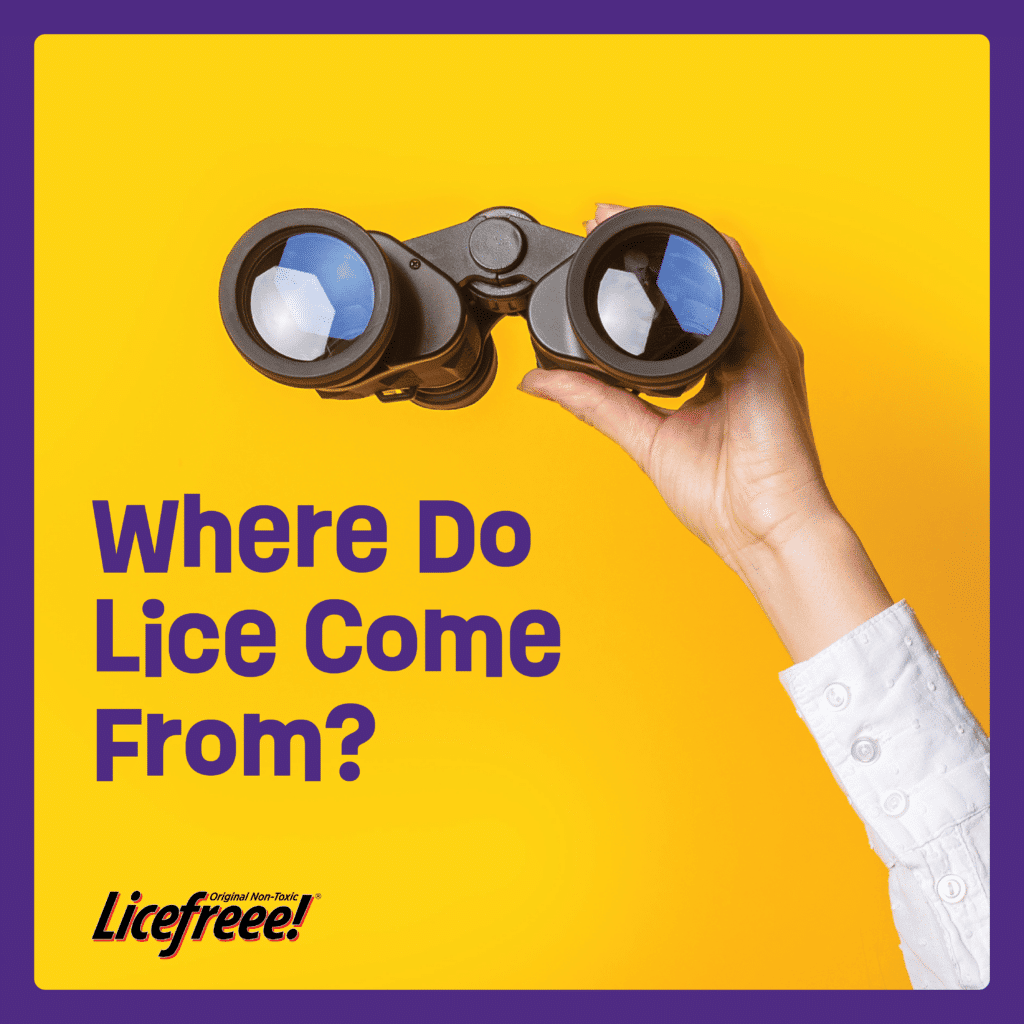
We’ve all heard of or experienced these creepy crawlies that seem to prey on classrooms and group activities, but where do lice actually come from? And, how can we help avoid them from spreading?
A louse is a parasite that commonly attaches itself to your hair and feeds on human blood. Creepy, right? These parasites are extremely common, especially in school-age children. One of the most frequent types of lice is head lice, and it is estimated that millions of lice infestations occur annually worldwide. Anyone who has ever had a lice infestation or knows someone infected with head lice knows very well how difficult it is to get rid of this parasite. Head lice most commonly affect children, and they can be a severe nuisance to get rid of completely.
Where do Head Lice Come From?
Whenever a lice infestation occurs, it is common to wonder where it came from and what caused it. The first thing to know is that if you or your child has head lice, you caught them from another person, from head-to-head contact. Head lice are believed to have originated around 800,000 years ago from various body lice. From the body, lice evolved to attach to the scalp. Head lice are believed to have originated in North America and then migrated to other parts of the world.
Interestingly, some genetic differences between head and body lice have given birth to many theories. One theory is that body lice evolved into head lice around the period when people started wearing clothes. It became more difficult for lice to penetrate through the clothing and as humans lost body hair, the lice had to adapt. This is why body lice evolved to have sharp claws that can grab onto the smooth fibers of clothes instead of holding onto the skinny hair shafts.
Growth Cycle of Head Lice
Adult female lice can lay up to eight eggs every day right onto the shaft of your hair. The eggs located less than six millimeters from the scalp’s surface are most likely to hatch. The female louse gives a specific secretion that helps the eggs remain glued to the hair. It takes around a week for the eggs to hatch, and a nymph is born. The larvae go through three distinct growth phases to reach adult size.
Adult lice are around the size of a sesame seed and very difficult to see with the naked eye, as they can be black, brown, or even white. Head lice feed on human blood at least four to five times daily. The lice use their mouth to bite into the skin of the scalp to drink blood. They also produce a substance that blocks clotting, thus sucking the blood.
How does Head Lice Spread?
While lice infestations can happen to anybody, it is more commonly observed in school-going children. While most people assume that poor personal hygiene, such as not bathing, is the cause of head lice, this is not the case.
Head lice spread from one person to another in two main ways. One is by direct head-to-head contact, and the other is by sharing pillows, scarves, hair ties, caps, hats, combs, brushes, or other personal items. Head-to-head spread of head lice can happen when children hug or put their heads close to each other for playing, reading, or other activities.
On the other hand, those living on unwashed clothing can also spread lice. This is why if there is a lice infestation, you should thoroughly wash all your bedding, pillowcases, pillows, and clothes and avoid sharing the same with others.
Treatment of Head Lice
Now that you know where lice come from, it is time to learn about the various treatments. The most common treatment involves using over-the-counter sprays and shampoos like Licefreee Spray. Upon treatment, you’ll want to vacuum your home thoroughly and clean your clothes and bedding that might have been exposed to the lice or where your hairs might have fallen.
Licefreee Everyday Shampoo helps avoid the re-infestation of lice in the days or weeks after using the head lice treatment. After applying the shampoo and washing your hair, you can use a special lice comb known as a nit comb to carefully comb out the eggs that remain attached to the hair shaft.
Understanding where head lice come from will help you to better manage the cleanup and treatment. Remember that there is no way to prevent lice infestation completely, but avoiding head-to-head contact with people wherever possible is one of the most important ways to prevent lice from spreading.
